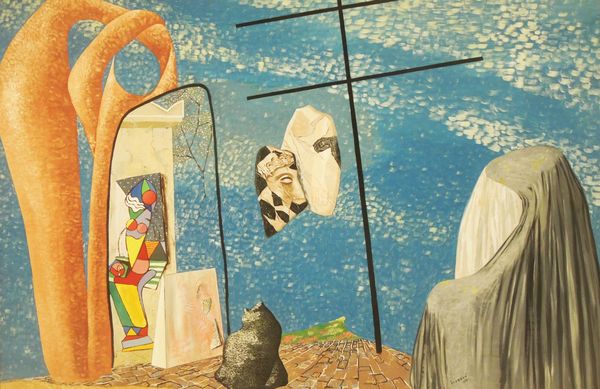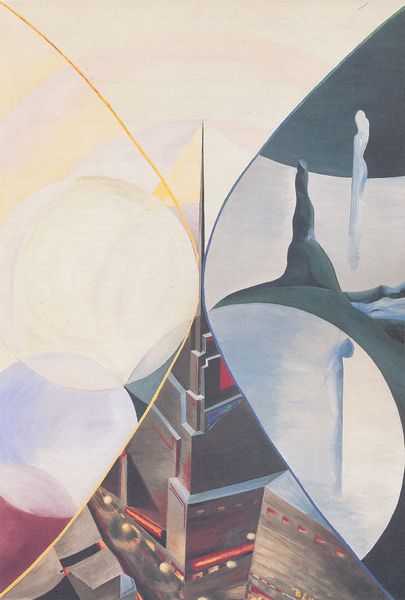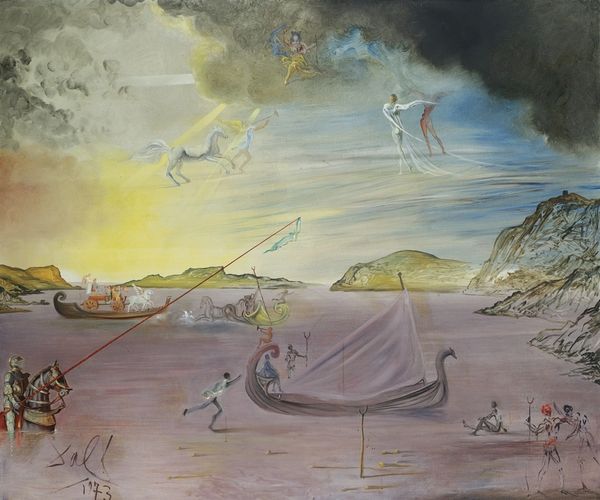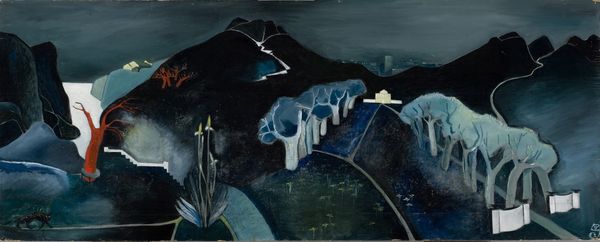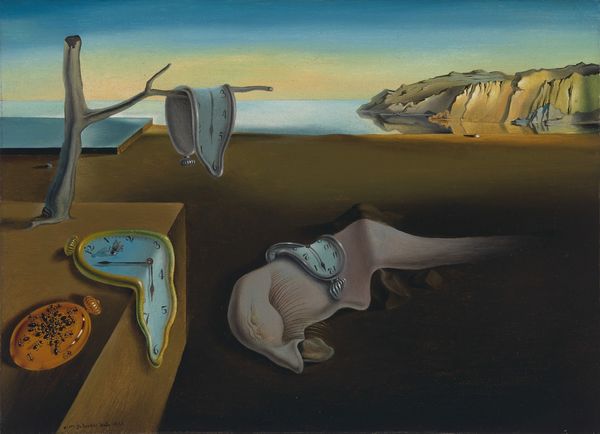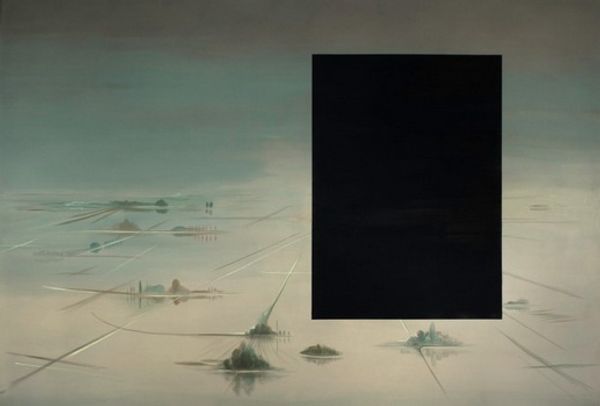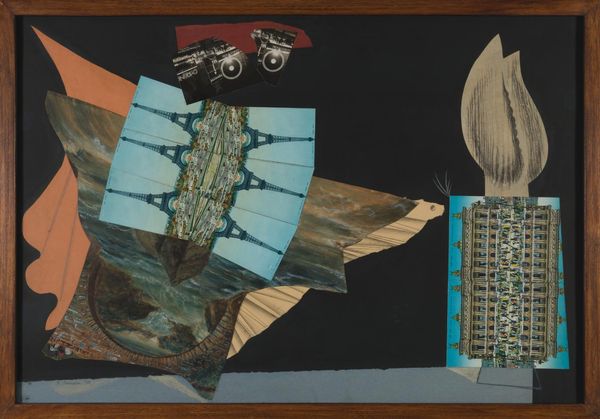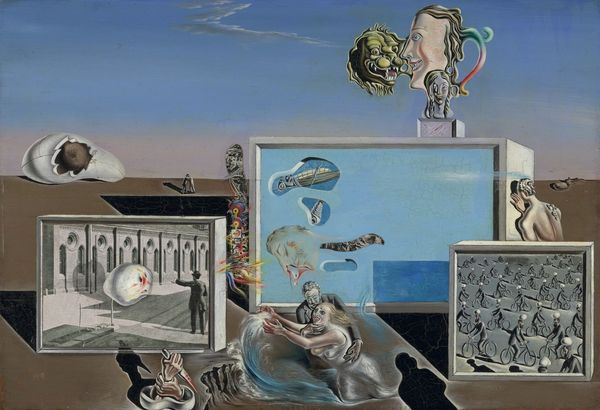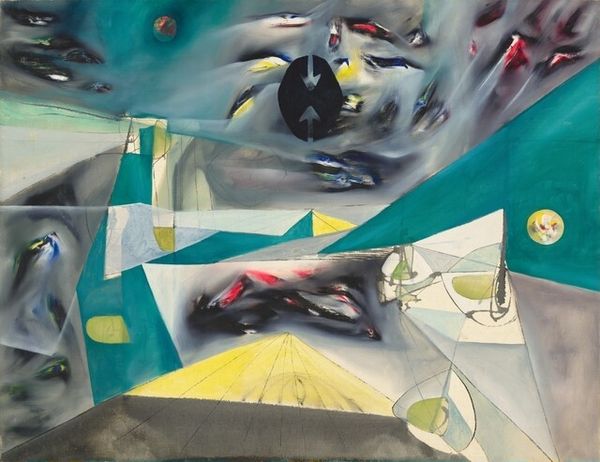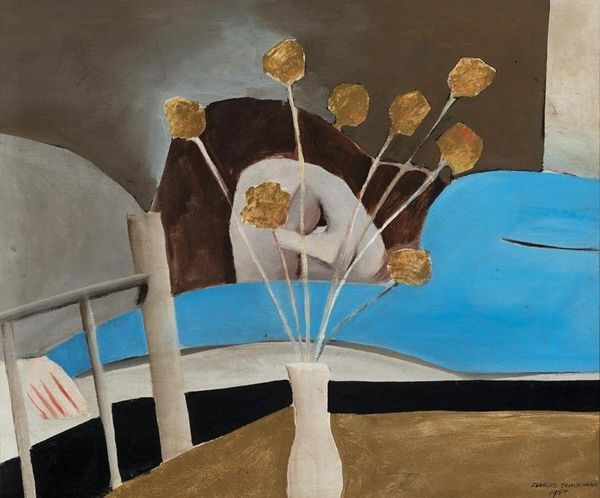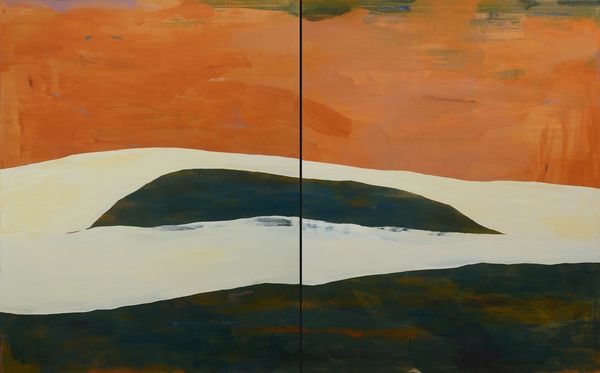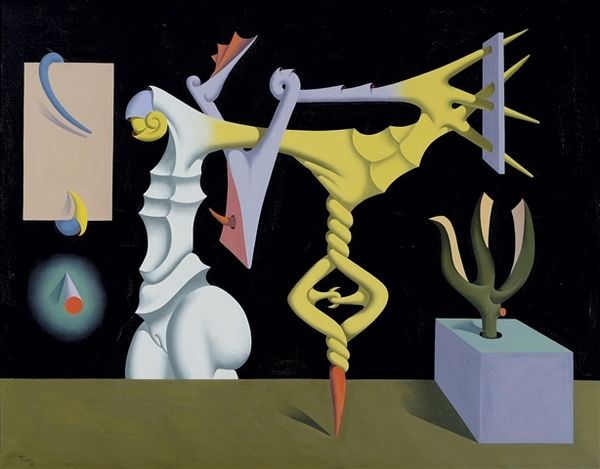
painting, oil-paint
#
painting
#
oil-paint
#
landscape
#
painted
#
figuration
#
possibly oil pastel
#
form
#
abstraction
#
history-painting
#
surrealism
#
modernism
Copyright: Modern Artists: Artvee
Curator: This is Salvador Dali’s 1960 painting, “Ciel hyperxiologique.” Editor: My initial impression? There's an unsettling tension here, a cool yet disquieting effect with its muted palette and geometrically divided plane. Curator: Indeed. Dali painted it during a period preoccupied with nuclear mysticism, when the anxieties of the atomic age heavily influenced his imagery. He was also increasingly focused on representing objects in space and time. Editor: I see what you mean about anxieties— the sky and sea offer a traditional landscape vista that recedes behind and beyond these odd, almost architectural planes of a grayish, wrinkling fabric, seemingly impaled with nails. It's visually unsettling. Curator: Consider how Dali subverts the genre of landscape. He employs the illusionistic rendering we expect, yet populates it with objects defying logic, creating a "hyperxiological sky", something beyond objective value or known reality. Notice also how the canvas plane divides our focus in two discrete parts? Editor: Yes, almost as though reality itself has fractured. It's a compelling construction— the harsh lines offset by those surreal, melting forms he's known for, all those seemingly ordinary elements, like the nails, made disturbing. What do they signify here? Curator: One interpretation situates Dali reacting to what he believed to be the collapse of modern systems, which, after two major world wars, must be fixed. That's one of the most common theories; although I suggest an examination of formal arrangement and Dali's mastery over realism subverted through unusual compositional tactics to unnerve. The details, perfectly rendered, pull you in, only to eject you. Editor: So, while reflecting social anxiety and historical tensions, he prioritized the sheer aesthetic force— that calculated disturbance achieved through those compositional juxtapositions? Curator: Precisely. For Dali, shock was integral. Whether we interpret through cultural context or formal elements, this canvas undeniably elicits a response. Editor: Agreed. Its effectiveness arises as much from its disconcerting context as its bizarrely compelling composition. Curator: A synthesis that characterizes so much of Dali’s genius. Editor: Quite. I’ll remember that sensation of cool, precise anxiety.
Comments
No comments
Be the first to comment and join the conversation on the ultimate creative platform.
